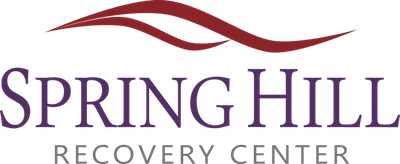How Is Cocaine Used?
Cocaine can be snorted, smoked, injected, and even eaten. Different forms of cocaine require different routes of administration. Each method of administration carries its own unique risks to the person using it.

Cocaine is widely considered to be a ‘party drug.’ It is commonly portrayed in movies as a white powder that is snorted by lively and happy party people having a great time.
However, cocaine is highly addictive and can be consumed in a variety of harmful ways.
A cocaine high is often short-lived and quickly leads to increased cravings and cocaine dependency. Learn how the drug might be smoked, snorted, injected, or eaten.
Different Forms Of Cocaine
Cocaine is derived from the leaves of the coca plant that is natively grown in several South American countries. From there, it can be broken down or built into several different forms.
Different forms of cocaine include:
- freebase cocaine
- powder cocaine
- cocaine hydrochloride
- crack cocaine
Primary Routes Of Cocaine Administration
Many people think of snorting white powder when they think of cocaine consumption. However, there are many methods of administration when it comes to cocaine abuse.
Smoking Cocaine
When cocaine is dissolved in a mixture of water and baking soda, it is referred to as crack cocaine. Crack cocaine can be smoked, which causes large amounts of the drug to enter the body.
Smoking cocaine delivers an immediate high lasting 5 to 10 minutes. This relatively short high can lead to a cycle of repeat binging on the drug, which can quickly lead to addiction.
Snorting Cocaine
One of the most common methods of cocaine use is snorting powdered cocaine through the nose.
This method is frequently portrayed in media and movies, and is associated with wealth and partying.
Snorting cocaine, also known as insufflation, can carry the same risks of dependency as other methods of use.
Additionally, snorting cocaine can damage the nose and mouth significantly.
Injecting Cocaine
Injecting cocaine is often considered the most dangerous way to consume the drug.
It carries an increased risk of dependency and can commonly be cut with other drugs, which can create a dangerous cocktail.
Additional risks can come in the form of infection from dirty needles.
It is common to see various skin infections associated with sharing needles, along with passing diseases like hepatitis and HIV.
Freebasing Cocaine
When cocaine is broken down into its purest form, it is known as freebase cocaine.
Freebase cocaine is created by removing the cocaine base from its salt form from which it is naturally derived.
This form of cocaine has a low melting point, which makes it easy to smoke and inhale.
Freebasing cocaine leads to an immediate high followed by a crash that causes cravings and withdrawal.
Eating Or “Gumming” Cocaine
The practice of rubbing powder cocaine along the gumline is commonly known as eating or “gumming” cocaine. This is commonly done to test the purity of powder cocaine.
Gumming cocaine can sometimes be a more discreet way to use the drug as it does not require any special tools or pipes to consume.
This method of cocaine use can deteriorate the mouth and gums, which can lead to tooth decay and bleeding gums.
Risks Based On The Method Of Use
Cocaine abuse in general can carry many risks, but the effects of cocaine on the body can differ depending on the method of use.
Here are a few of the major risks for each method of use:
- Smoking cocaine can cause chest pain, damage to blood vessels, and cardiovascular issues.
- Snorting cocaine powder can lead to nosebleeds, damage to the intranasal passageways and septum, as well as side effects like a runny nose.
- Freebasing cocaine can cause cocaine overdose (which can lead to sudden death) as well as increased risk of substance abuse.
- Injecting cocaine puts people at an increased risk for intravenous infections, increased heart rate and body temperature, and damage to the central nervous system.
- Eating cocaine can lead to weight loss, damage to the gums and teeth, and increased blood pressure which can lead to a heart attack.
Long-term effects of cocaine use can put a lot of stress on the cardiovascular system. Irregular heart rhythm is commonly reported, which can lead to cardiac arrest.
Additionally, mental health can be impacted by both long- and short-term effects of cocaine use.
Mental alertness can be impaired and a person using cocaine may have symptoms of psychosis.
What Is The Most Common Way To Use Cocaine?
Snorting cocaine is the most common method of administration, but it is also one of the most expensive.
It is not uncommon for powder cocaine to be cut with other cheaper additives for this reason.
When cocaine is “cut” with other substances, it is difficult to know the purity of the product and what else may be in it.
This increases the risk of overdose and other illnesses depending on the product.
Some dealers may combine heroin or opioids with cocaine to create something called a “speedball,” which delivers different euphoric effects and can be very dangerous.
Is Cocaine Addictive?
Cocaine is an addictive drug. No matter what route of administration is used, or which form of the drug is taken, it carries a high risk of dependency.
Similar to other types of stimulant drug use, cocaine produces a high because it reacts with a neurotransmitter in the brain to increase levels of dopamine and norepinephrine.
When these levels of dopamine crash, it is common for people to feel withdrawal symptoms.
These symptoms can lead to a person consuming more of the drug to achieve the same high in subsequent uses.
How Can I Get Help For Cocaine Addiction?
If you or a loved one are working through cocaine addiction, you don’t have to do it alone. Professional treatment programs can help you overcome addiction.
Intensive inpatient programs complete with medical detox options may be a good fit for your addiction treatment journey.
Spring Hill Recovery Center specializes in drug addiction treatment and offers programs specific to cocaine abuse.
Your journey to recovery can start today. Give us a call to learn more.
- National Drug Intelligence Center — Crack Cocaine Fast Facts https://www.justice.gov/archive/ndic/pubs3/3978/3978p.pdf
- National Institute on Drug Abuse (NIDA) — How is cocaine used? https://nida.nih.gov/publications/research-reports/cocaine/how-cocaine-used#:~:text=Users%20primarily%20administer%20cocaine%20orally,bloodstream%20through%20the%20nasal%20tissues.
- National Library of Medicine — Cocaine: Patterns of use, route of administration, and severity of dependence https://pubmed.ncbi.nlm.nih.gov/7921717/
- VA Center for Integrated Healthcare — Cocaine https://www.mirecc.va.gov/cih-visn2/Documents/Provider_Education_Handouts/Cocaine_Information_Sheet_for_BHPs_Version_3.pdf


